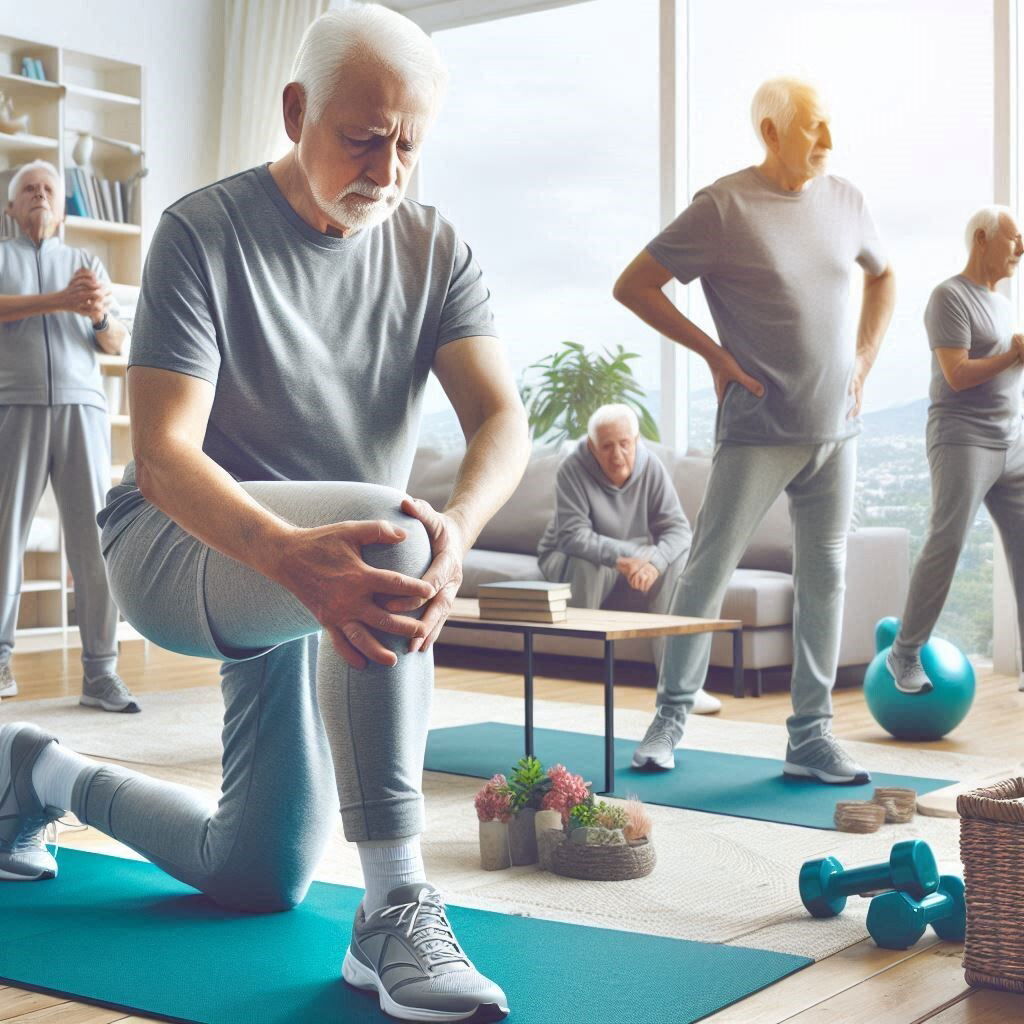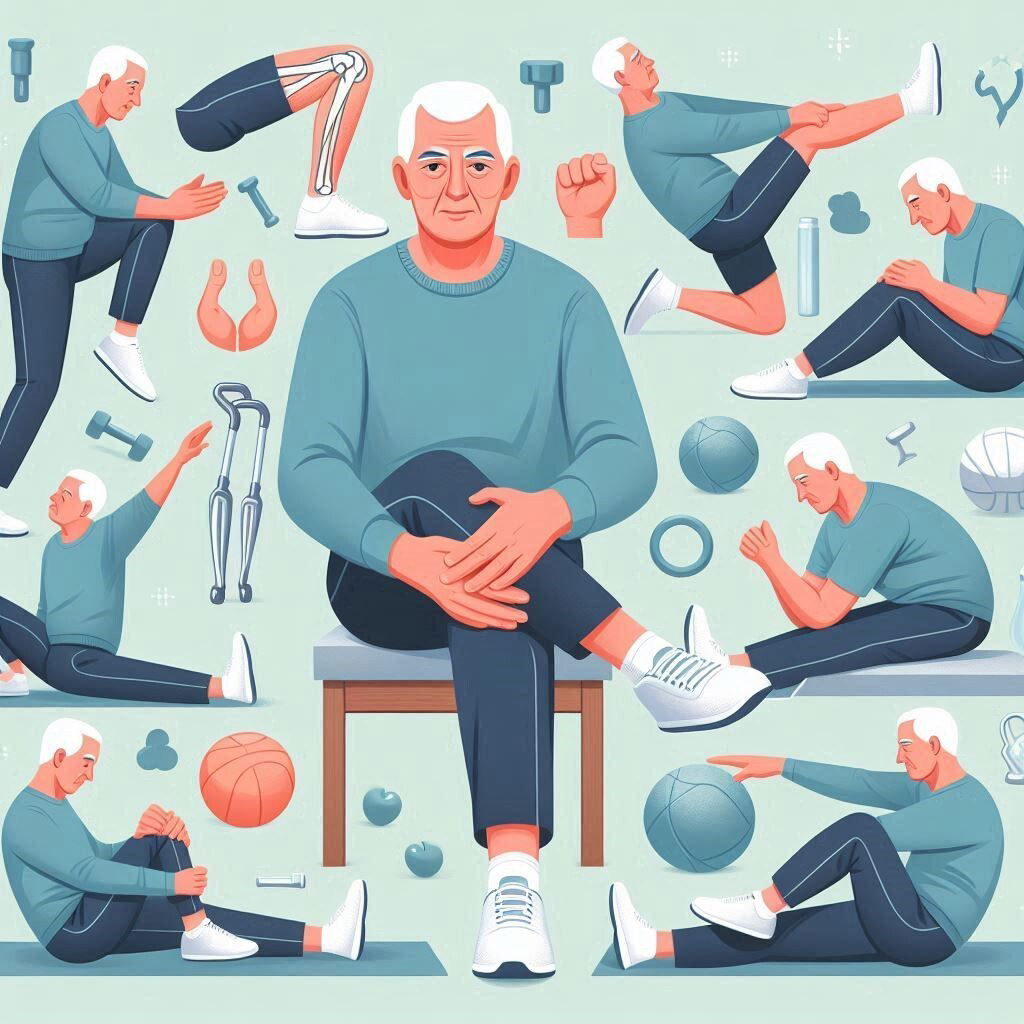Osteoarthritis knee exercises: the key to healthy aging

Introduction
Managing day-to-day life with knee osteoarthritis is challenging but adopting the right exercises into the routine does wonders. The article focuses on osteoarthritis knee exercises that not only help in pain management and improve knee mobility but also play an important role in aging healthily. The article goes about numerous knee exercises especially for those having knee osteoarthritis, so go through great tips and suggestion that will certainly influence the life quality. Whether you are seeking to relieve the pain and stiffness, or to remain active, we offer insights and tips needed.
Understanding osteoarthritis and its impact on the knee
Osteoarthritis defined
Osteoarthritis, OA, is associated with a degenerative joint disease that results from the progression of the wear and tear of the cartilage that usually cushions the knees which leads to friction between the bones. The result is stiffness as the bones attempt to heal. OA is the most common type of arthritis, and the knee is one of the most common sites that it affects. This is a condition that affects the smoother motion of the joint, which directly impacts various activities during a typical day.
Symptoms of knee osteoarthritis
Symptoms of knee OA are acute on the specific joint such as pain, tenderness, swelling, and instability. The other symptoms include stiffness during movements and reduced ranges of movements. They are marked acute during the errands and after resting. The symptoms may make one inactive, but on the other had to avoid making the condition worse, one needs to balance the physical movements and inactivity to promote the flexibility of the affected knee.
The importance of exercise for the condition
With OA, exercises are fundamental, as they help in strengthening the muscles of the knee and its surroundings, thereby enhancing flexibility and reducing the pain that may accompany the condition. Exercises help in managing and controlling the weight of a person, as obesity accounts for additional pressure exerted on to the knees due to the excess weight. They also play a fundamental in promoting healthy aging.
Effective Osteoarthritis Knee Exercises
Exercise as Such: Osteoarthritis knee exercises have been devised in the following ways.
1. Warm-Up
- Stretching- Simple and gentle stretches can serve as a perfect beginning of exercise, so one can stretch his/her calf and hamstring in order to prepare the knee for a serious workout.
- Range of Motion Exercises- These exercises help maintain flexibility and reduce stiffness in the knee. Simple movements like knee bends and straight leg raises can be very effective.
2. Strengthening Exercises
- Quadriceps Strengthening- Strong quadriceps can support and stabilize the knee joint. Exercises like straight leg raises, seated knee extensions, and wall squats are excellent for these muscles.
- Hamstring Strengthening-. Hamstrings are also important in knee stability. Exercises like hamstring curls, either standing or using a resistance band, can help build strength in these muscles.
3. Low-Impact Aerobic Exercises
- Swimming- Swimming is a fantastic low-impact exercise that takes the pressure off your knees while allowing you to work on your cardiovascular fitness and muscle strength.
- Cycling- Stationary cycling is another excellent low-impact exercise that can improve your knee mobility and strength without the high impact of running or walking.
4. Flexibility and Balance Exercises
- Yoga- Yoga helps you improve your flexibility, balance, and overall joint function. Poses such as the warrior pose and tree pose can be very beneficial for individuals with knee osteoarthritis.
- Tai Chi- Tai Chi is a gentle martial art focusing on slow, deliberate movements. It is a great exercise to improve your balance, flexibility, and muscle strength.
5. Post-Workout Cool Down
- Gentle Stretching- After your workout, cool down with gentle stretches to relax your muscles and reduce any stiffness that may occur post-exercise. Focus on the thigh, calf, and hamstrings.
- Ice Therapy- Ice your knees post-exercise to reduce inflammation or pain. Make sure to wrap the ice pack in a towel; otherwise, it can burn your skin.
Tips for Managing Osteoarthritis Due to Exercise.
- Listen to your body: First of all, before you decide to exercise, be sure to pay attention to how your body is responding. If you find that you are experiencing increased pain or discomfort, adjust your routine or take some time off.
- Be gradual: Begin your exercise by taking things slow before working your way up. Start with low impact exercises and gradually increase the intensity as your strength and endurance improves. This is crucial because it is going to prevent you from getting injured and eventually, it will lead to your success in using your knee for long.
- Rest: Another tip is that you should give your body sufficient time to rest. As such, it is a good idea to incorporate rest days in your regular routine of exercise to ensure that you do not overload your joints and muscles.
- Consistency: Stay consistent while exercising to benefit from the physical activity. You can include exercises throughout your day such as taking a walk or going for some stretches.
- Diet: Eating anti-inflammatory foods is also an approach to managing osteoarthritis, such as those rich in omega 3-fatty acids, antioxidants, and vitamin D.
- Weight management: Weight management is another approach since it is responsible for easing the stress on the knees. It is, therefore, a good idea to combine a balanced diet with regular exercise to ensure that you maintain a healthy weight.
- Drink plenty of water: this will help lubricate your joints, which is essential for their health.
FAQS
Q1. What are the best exercises for knee osteoarthritis?
Most low-impact exercises like swimming, cycling, and yoga is excellent for knee osteoarthritis. The Mayo Clinic recommends strengthening exercises like straight leg raises and hamstring curls as well.
Q2. How often should I exercise for knee osteoarthritis?
The same source above recommends 30 minutes of moderate exercise practically every day of the week. Remember that you want to find the correct balance and listen to your body’s needs and signals.
Q3. Can I worsen my knee osteoarthritis when I exercise?
You should not aggravate your knee osteoarthritis when you perform your workouts. Start slow when you are beginning, deliberately ensure that you are using the correct techniques, and avoid high-impact exercise routines that can put stress on your joints.
Q4. Are there exercises that I should not do if I have knee osteoarthritis?
Given that you should avoid high-impact stress, do not engage in running, jumping or exercises that require your sudden stops or starts.
Q5. How should I deal with the pain if I feel it during my workout routine?
Always properly warm up before the workout, use the correct shoes with lots of support, and use a knee brace if you feel you need one. When exercising is finished, apply ice.
Q6. Do I need to ask my doctor before I implement anything?
Indeed, you should still consult a healthcare professional when starting a new workout routine, especially when you have a condition like osteoarthritis.
Conclusion
The best osteoarthritis knee exercises can transform your life if followed religiously. They can have a positive impact on your quality of life and support your healthy aging. You should concentrate on low impact, capacity, and adaptability because they can resolve or manage osteoarthritis effectively. The most important thing is to listen to your body and begin slowly. Over time, you will realize that you no longer experience any pains, and you are able to engage in the best exercises. They will help you achieve your goals and enjoy the benefits of healthy and active aging despite osteoarthritis.
